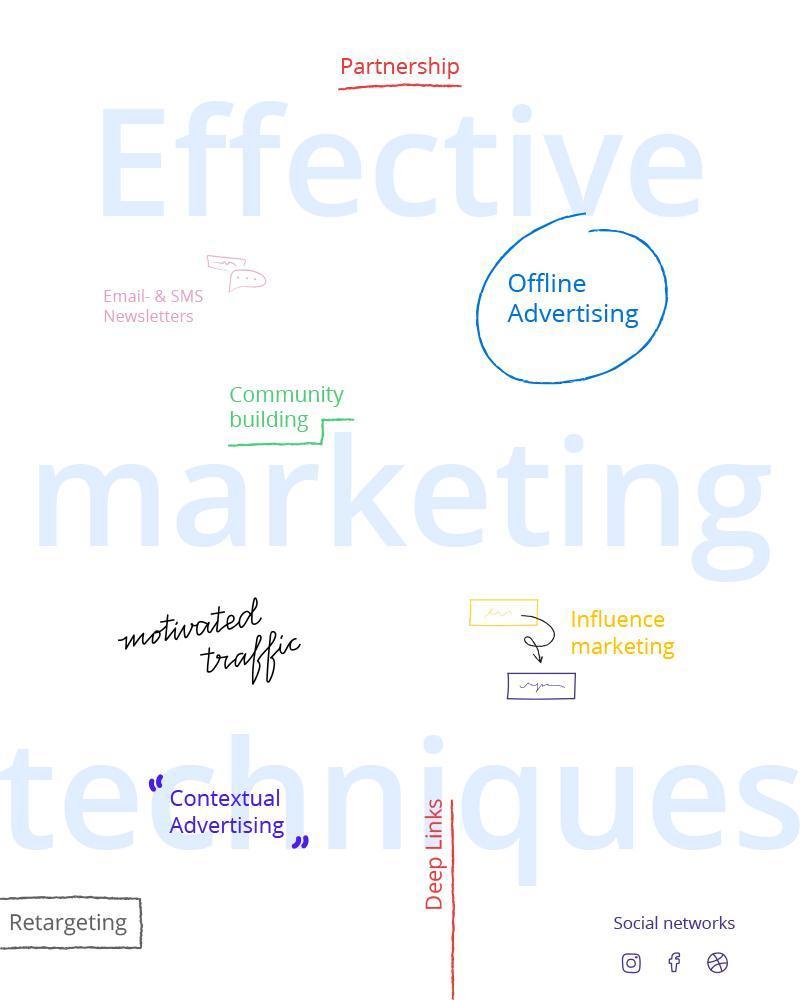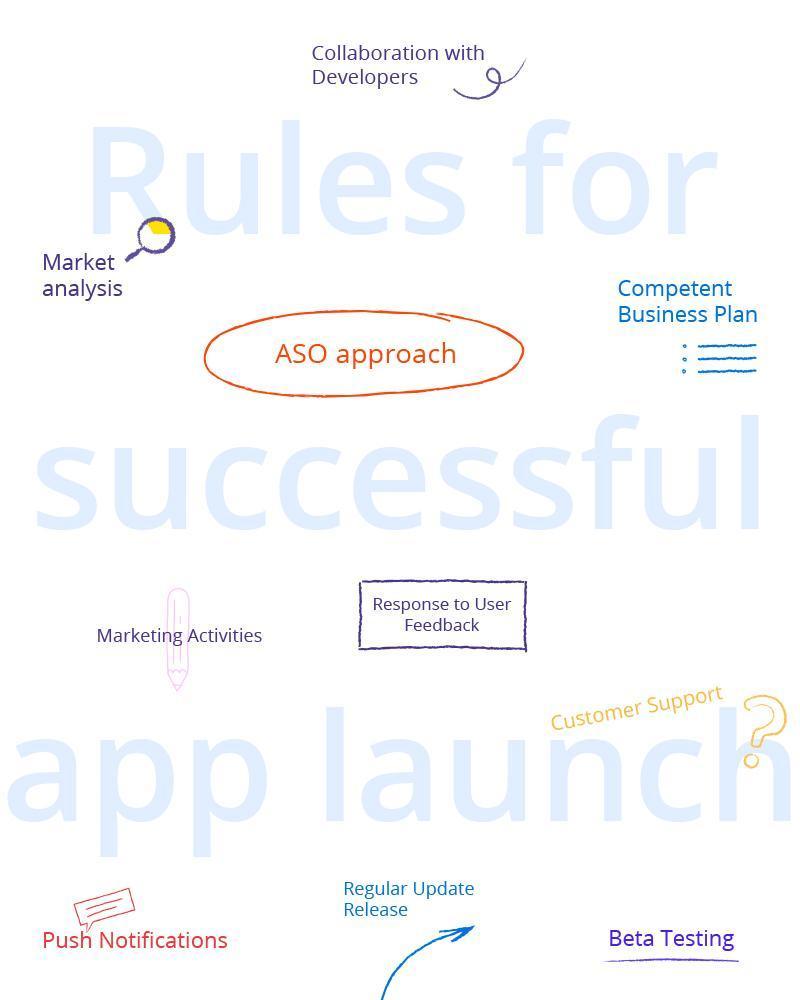A successful app launch means a lot, much more than you might think. The hard part's over, it seems to you, but, in fact, publishing a program in app stores doesn't imply completing a project itself; in a way, it’s just the beginning of your journey.
First of all, there're many critical mobile app launch pitfalls, which you should know about in advance. Also, you must understand that a created application is your brainchild, which should be constantly taken care of.
This is what we're going to discuss at length in our new article.
We’ll explain to you how to make your mobile app launch a success. You'll learn what to do after the final stages of development and which techniques to use to start your application properly.
Why is the mobile app launch strategy important?
As an analysis by Appboy shows, no more than 25% of users open the app again after the installation day. On the other hand, Leanplum studies say that about 80% of customers usually abandon the application forever after the first use. In addition, statistics confirm that when 3 months pass (approximately on the 90th day), the retention rate decreases to 1.90%. Pretty sad statistics, right? We wouldn't want a similar fate befell you!
So unwillingness to join the ranks of losers is a good reason to launch your app correctly. However, we'll give a few extra ones, including:
- It’s a great way of finding bugs in an app and fixing them in a timely manner;
- You get an understanding of how to build relationships with consumers and compete with other market players;
- You have a chance to receive high results of apps on Google Play or App Store (or both);
- You’re able to effectively monetize the application. Monetization depends on the number of active and loyal users, and this is directly related to the issue of the new mobile app launch;
- And, finally, you can keep your app relevant in the marketplaces.
Interested in details? Then it's high time to list the key mistakes to avoid after the app is launched.
Main mobile app launch mistakes
Every subheading’s name below is something you should NEVER do (at least, if you want to ensure an app’s success), for these are key post-launch mobile app mistakes to avoid. However, don’t be afraid to get confused: in each description, we explain our idea and give clear concrete advice.
Forget about market research and business plan
Let's start with the simplest and most obvious option. If you want to fail your project, forget about market research, competitor analysis, creating a portrait of your consumer, and other steps of the sort. And don't try to draw a business plan! Why waste your time if you aren't willing to make a go of it and blossom out?
But joking aside: if you do intend to bring your program to the top 10, then all of the above is your direct guide to action.
Though, let's specify... To gain your market share, you must:
- find out the current state of your market;
- identify the strengths and weaknesses of your main competitors;
- figure out what an average user of your application wants to get;
- based on the data obtained, make up a competent business plan.
By the way, among other things, high-quality desk research will help you determine the best day to launch an app. After all, proper timing also matters.
Underestimate the importance of beta testing
The process of beta testing and fixing the problems found is another important point in your app launch plan.
What is beta testing?
This is a process where an end-user tests a product in order to check its functionality, usability, reliability, and compatibility. It’s not only about how to find bugs in iOS & Android applications (hopefully, you've already found most of them at one of the final stages of app development). It's also about identifying real benefits to real users.
And bear in mind, a full-fetched version of the program with a working functionality is being beta-tested. The task is to evaluate the capabilities of the application from the point of view of its future users: this applies to bugs, incorrect features, and much more. After the beta testing phase, you’ll be able to search for solutions to enhance app functionalities.
There are many beta testing tools including Centercode Connect, Betatesters.io, HockeyKit, etc. Although the best solution is to seek the help of experts. They’ll know what to do so that you get your answer.
Ignore marketing activities
No matter what business you’re engaged in, you can’t manage it efficiently without marketing.
However, in order to build a working marketing plan, it’s necessary to analyze a lot of parameters and do no less work. And we’re ready to help you with some recommendations.
#1. Offline Advertising
Offline advertising isn’t the most popular way to promote applications, but effective in some cases. It includes the use of posters, press releases, print ads, etc.
#2. Email, SMS Newsletter
Such a method is useful to those who have already collected a contact base of customers. The newsletter announcing the new application launch is an excellent option to start marketing promotion.
#3. Partnership
It means you agree with a certain company on cooperation. Say, everyone who downloaded your application in a certain period of time receives a discount on a particular service (or on the purchase of goods, depending on the activities of the partner you've chosen).
The company (your partner) would be able to support customer loyalty, and you'll gain a new user audience.
#4. Social networks
You can't expect to launch applications successfully without including the use of social networks in your marketing strategy. Believe us, this is a very multifunctional tool suitable for building a community, advertising, viral marketing, conducting promotions, increasing user loyalty, receiving timely feedback from customers, and much more.
#5. Community building
As we mentioned above, social networks are good for creating a community of potential users of your application. However, FB, Instagram, and Twitter are by no means the only opportunities. You can build a similar community platform on your own web resource or take advantage of one of the popular thematic forums. There are a great many options, the main thing is to keep conducting surveys among users, invite them to express their opinion on the product, leave comments, etc.
#6. Influence marketing
Here we mean attracting opinion leaders (famous bloggers) to product promotion. How exactly to interest them is another question. A good option may be to provide them with the opportunity to use the full functionality of your application for free (or at a discount).
#7. Motivated traffic
To get to the first points of the TOP list, the application needs to have a large number of installations in a short period of time (mobile app downloads). To increase the chances of such a result, developers often resort to services delivering motivated traffic, which is formed by encouraging users to perform certain actions (namely, you ask them to download your program). Users are being motivated through rewards: both monetary and intangible (such as access to exclusive content).
#8. Contextual Advertising
The main advantage of such a popular marketing technique is the following fact: ads are being shown only to interested, ready-to-buy users (with correct targeting).
#9. Retargeting
The tool is designed to return users to the application they've already taken advantage of in the past. For example, if a user hasn't opened an installed app for a long time, a retargeting system will help to show him relevant advertisements whose task is to convince him to use the program again.
#10. Deep Links
Deep Linking is a system of special (deep) links redirecting the user from ads, emailing, push notifications (and more) to the specific app content, which has more chances to interest him (instead of redirecting the user to the main screen and forcing him to find the desired information from here on his own).

Don't consider ASO (App Store Optimization)
The next point of the mobile app launch strategy is related to marketing either, but it’s too important, so we decided to allocate it to a separate subsection.
As you've already understood, if you want to get users to install the application, make sure it’s visible in the Google Play and App Store in the first positions. And such high positions in the TOP are provided by the following indicators:
- The total number and dynamics of app installations;
- User ratings;
- The number of comments;
- Dynamics of application deletions;
- The number of app launches by users.
To ensure all of the above, you need to resort to ASO (App Store Optimization).
ASO is the optimization of text and visual elements of the application page in Google Play and App Store so that potential users find and install the program faster and more willingly. Shortly put, it’s about the proper way to serve your app in the stores.
ASO goals:
- Growth in the number of mobile app downloads.
- Increased search visibility (namely, impressions for keywords in app stores).
- Conversion optimization, including on a given traffic channel (which is a tricky thing to do, to say the truth).
We hope you now understand why you should focus on App Store Optimization. But how to do it? Here are a couple of useful tips:
- Text optimization: the optimization of the name of the application, its short and complete descriptions, promo text, the What's New section, and more. Take your time to find out all the requirements of Google Play and App Store and do your best to fulfill them.
- Graphic optimization, which includes an icon, screenshots of app screens, video to visually demonstrate the program operation, promo banners, etc. Again, follow the requirements of Google & Apple and remember: users love everything looking beautiful, stylish, and modern.
Of course, you should consider App Store Optimization costs when planning your budget, but believe us, it's worth it!
Don't provide enough customer support
We've listed a few actions that can partly be attributed to the pre-launch mobile app mistakes to avoid (say, some steps of a marketing campaign, writing a business plan, App Store Optimization strategies, etc). However, now we'd like to proceed to a description of your actions AFTER the application start. And first of all, we’d like to discuss the issue of providing enough customer support.
So, you managed to create and launch your app, you've found your very first users... however, how to retain them? How to make them open your program and enjoy its features in full?
There are a lot of tips on the matter, but the most important one is to be constantly in touch with the consumer and respond as quickly as possible to any question or request he may ask or make. Acting in such a way, you can timely solve a particular problem a user has, or help him figure out the service operation. In any case, as a result, you’re likely to avoid a sad situation when the user uninstalls the application. Why delete it if you helped him quickly and professionally?
Pay no attention to users' feedback
It’s not enough to provide user support by just replying to emails and chat messages. You also need to follow user feedback on social networks, on your website, in app stores (anywhere), and react to each comment.
In response to negative comments, try to smooth things out and promise to solve the problem mentioned (and then do solve it, surely!). And, of course, thank the user when you see his or her positive feedback - it never hurts!
Don't remind of yourself
Alas, we, people, have a short, sometimes elusive memory. We can forget even the things that are important to us, not to mention the applications we've installed passingly! So your task, as the app owner, is to remind users of your mobile service after the app launch from time to time (not only once!). And the best way to refresh the user's memory is by sending him a proper push notification.
Why send push notifications:
- inform on the release of updates;
- discuss promotions and special offers;
- report on new features or interesting content added to the application;
- ask to provide a good review (which increases the app rating);
- remind of yourselves to users who haven't logged into the application for a while.
But you shouldn’t send too many notifications, otherwise, the user decides to remove the app due to such excessive intrusive activity on your part.
Don’t release updates on a regular basis
Even the most successful app launch would lead to nothing if you don't update your program on an ongoing basis.
There are several reasons to do this:
- technology development. The world is developing, and technology doesn't stand still either. New frameworks appear, platforms improve... and you need to follow the changes in the innovation market to make your application more and more technically advanced.
- an MVP model. Sometimes, with a limited budget, a company is forced to launch an application of a simplified type - the so-called MVP model. And in such a case, updates are inevitable.
- User requests. If you follow the tips of our article and respond to user requests, sooner or later you'll face a situation where a large number of your consumers show certain complaints about your service. Often, these problems can easily be solved with the help of new features. And new features mean the release of the update.
- Fixing bugs. The news about the bugs found is unpleasant, but such a problem is also solvable. Again, you'll need to update the application.
Stop cooperating with developers after launch
So, suppose, you agree on the need for regular program updates. But who will do it? Of course, competent specialists, high-skilled mobile developers would be required. And if you stopped cooperating with those who created your application, you’ll have to find and hire new ones, which is an extra fuss and a waste of time.
In other words, just as you support your users, the development company must maintain your app. The task is to guarantee its trouble-free and fail-safe operation and compliance with the latest IT technologies.

Conclusion on mobile app launch
We’ve listed the top mistakes to be avoided before the mobile app launch. And, hopefully, our article will help you approach this issue correctly. But if in doubt, ask questions, we're happy to help.




